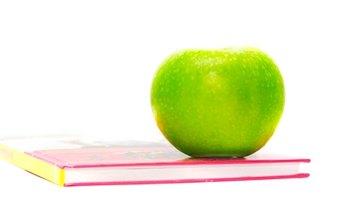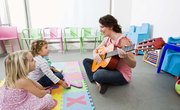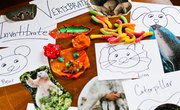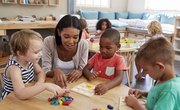Teaching primary science involves planning and preparation to create an effective, hands-on curriculum. By engaging the kids in interactive projects, you give them the opportunity to explore basic science concepts and relate them to the world. A balance of activities makes the teaching approach more effective for students with different learning styles.
Outline the topics you'll teach the primary school students. Refer to the curriculum guidelines or the primary science textbook if you're using one. List the main topic and the subtopics under each one. Refer to this outline as you plan the specific activities for each topic.
Create a time line for the teaching topics. Determine how much time you need for each chapter. Refer to the school year calendar to pencil in approximate dates for each part of the curriculum.
Write the goals or expected outcomes for each chapter. This will include what the primary students should understand about the concept and what they will do to demonstrate an understanding. It might include completing a particular science task, taking a written test or verbally explaining the concept. Keep these goals in mind as you plan the activities.
Plan an introductory activity for each chapter or concept. A demonstration such as a science experiment or video clip is a good way to pique the interest of the primary students. Conducting a quick prior knowledge assessment such as a KWL chart is another good way to introduce a new chapter.
Choose at least one hands-on activity for the kids for each subtopic. This might include a science experiment, building a 3-D model or creating a science-related art project. The specific subtopic will help plan the specific activity that works well. Create a list of materials needed so you are prepared for the activity when you reach that point in the curriculum.
Select children's books to complement the primary science curriculum. Choose both fiction and nonfiction children's books for variety.
Fill in the science lessons with a mixture of textbook work, paper-and-pencil activities and science games. You can easily customize classic kids' games to fit the science topics you're studying. Games such as Memory, "Jeopardy!" and Bingo work well. This gives the kids an alternative way to practice the science concepts.
Use science journals with the primary students to help them record their observations. There are many uses for science journals. They can draw pictures of science observations, write predictions about science events or answer daily science questions as a warm-up activity.
Tip
Help the kids find examples of how science is used in everyday activities.
Related Articles
References
Tips
- Help the kids find examples of how science is used in everyday activities.
Writer Bio
Based in the Midwest, Shelley Frost has been writing parenting and education articles since 2007. Her experience comes from teaching, tutoring and managing educational after school programs. Frost worked in insurance and software testing before becoming a writer. She holds a Bachelor of Arts in elementary education with a reading endorsement.










